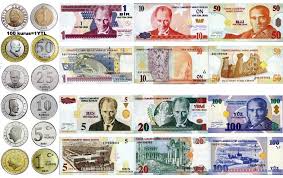What You Need To Know
Bursa is a large city in Turkey, located in northwestern Anatolia, within the Marmara Region. It is the fourth most populous city in Turkey and one of the most industrialized metropolitan centres in the country. The city is also the administrative centre of Bursa Province. Bursa was the first major and second overall capital of the Ottoman State between 1335 and 1363. The city was referred to as Hüdavendigar (Ottoman Turkish: خداوندگار, meaning "God's gift") during the Ottoman period, while a more recent nickname is Yeşil Bursa (meaning "Green Bursa") in reference to the parks and gardens located across its urban fabric, as well as to the vast and richly varied forests of the surrounding region. The ski resort of Mount Uludağ towers over it. The mountain was called the MysianOlympus by the Romans who lived there before. Bursa has rather orderly urban growth and borders a fertile plain. The mausoleumsof the early Ottoman sultans are located in Bursa and the city's main landmarks include numerous edifices built throughout the Ottoman period. Bursa also has thermal baths and several museums, including a museum of archaeology. The shadow play characters Karagöz and Hacivat are based on historic personalities who lived and died in Bursa. Bursa is also home to some of the most famous Turkish dishes such as İskender kebap, specially candied marron glacés, peaches and Turkish Delight. Bursa houses the Uludağ University, and its population can claim one of the highest overall levels of education in Turkey. The historic towns of İznik (Nicaea), Mudanya and Zeytinbağı are all situated in Bursa Province. In 2015, Bursa had a population of 2,340,000, while Bursa Province had 2,842,000 inhabitants.
Area: 1,036 km²
Population: Estimate 2.34 million
Currency
-
The Turkish Lira is the currency of Turkey.
Economy
Bursa is the centre of the Turkish automotive industry. Factories of motor vehicle producers like Fiat, Renault and Karsan, as well as automotive parts producers like Bosch, Mako, Valeo, Johnson Controls, Delphi have been active in the city for decades. The textile and food industries are equally strong, with Coca-Cola, Pepsi Cola and other beverage brands, as well as fresh and canned food industries being present in the city's organized industrial zones.
Language
Main sights
Ulu Cami is the largest mosque in Bursa and a landmark of early Ottoman architecture, which carried many elements from the Seljuk architecture. Ordered by Sultan Bayezid I, the mosque was designed and built by architect Ali Neccar in 1396–1400. It is a large and rectangular building, with a total of twenty domes that are arranged in four rows of five, and are supported by 12 columns. Supposedly the twenty domes were built instead of the twenty separate mosques which Sultan Bayezid I had promised for winning the Battle of Nicopolisin 1396. The mosque has two minarets. Inside the mosque there are 192 monumental wall inscriptions written by the famous calligraphers of that period. There is also a fountain (şadırvan) where worshipers can perform ritual ablutions before prayer; the dome over the şadırvan is capped by a skylight which creates a soft, serene light below; thus playing an important role in the illumination of the large building. The horizontally spacious and dimly lit interior is designed to feel peaceful and contemplative. The subdivisions of space formed by multiple domes and pillars create a sense of privacy and even intimacy. This atmosphere contrasts with the later Ottoman mosques (see for example the works of Suleiman the Magnificent's chief architect Mimar Sinan.) The mosques that were built after the conquest of Constantinople (Istanbul) by the Ottoman Turks in 1453, and influenced by the design of the 6th century Byzantine basilica of Hagia Sophia, had increasingly elevated and large central domes, which create a vertical emphasis that is intended to be more overwhelming; in order to convey the divine power of Allah, the majesty of the Ottoman Sultan, and the governmental authority of the Ottoman State.
Health
-
Turkey has universal health care under its Universal Health Insurance (Genel Sağlık Sigortası) system. Under this system, all residents registered with the Social Security Institution (SGK) can receive medical treatment free of charge in hospitals contracted to the SGK.
Transport
Bursa has a metro (Bursaray), trams and bus system for inner-city public transport, while taxi cabs are also available. Bursa's Yenişehir Airport is 20 mi (32 km) away from the city centre. The citizens of Bursa also prefer Istanbul's airports such as Atatürk International Airport and Sabiha Gökçen International Airport for flights to foreign countries, due to Istanbul's proximity to Bursa. There are numerous daily bus and ferry services between the two cities. The 8.8 km (5.5 mi) long Bursa Uludağ Gondola (Turkish: Teleferik) connects Bursa with the ski resort areas 1,870 m (6,140 ft) high on the mountain Uludağ. The only railway station in Bursa is the Harmancık station on the Balıkesir-Kütahya railway, which was opened in 1930.
Weather
Bursa has a Mediterranean climate (Köppen climate classification: Csa) under the Köppen classification, and dry-hot summer temperate climate (Csa) Trewartha classification. The city has hot, dry summers that last from June until September. Winters are cold and damp, also containing the most rainfall. There can be snow on the ground which will last for a week or two.

